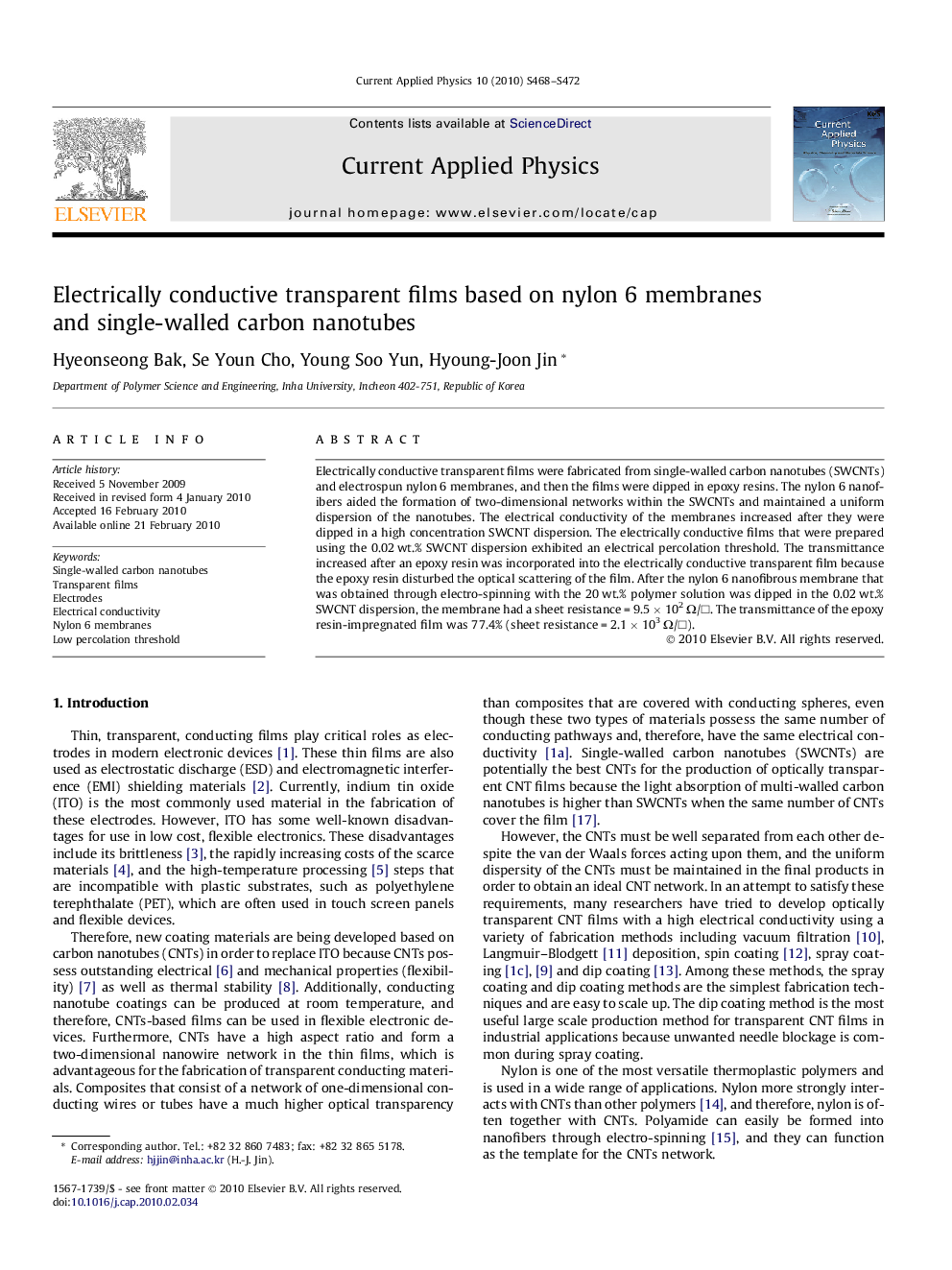| Article ID | Journal | Published Year | Pages | File Type |
|---|---|---|---|---|
| 1788802 | Current Applied Physics | 2010 | 5 Pages |
Electrically conductive transparent films were fabricated from single-walled carbon nanotubes (SWCNTs) and electrospun nylon 6 membranes, and then the films were dipped in epoxy resins. The nylon 6 nanofibers aided the formation of two-dimensional networks within the SWCNTs and maintained a uniform dispersion of the nanotubes. The electrical conductivity of the membranes increased after they were dipped in a high concentration SWCNT dispersion. The electrically conductive films that were prepared using the 0.02 wt.% SWCNT dispersion exhibited an electrical percolation threshold. The transmittance increased after an epoxy resin was incorporated into the electrically conductive transparent film because the epoxy resin disturbed the optical scattering of the film. After the nylon 6 nanofibrous membrane that was obtained through electro-spinning with the 20 wt.% polymer solution was dipped in the 0.02 wt.% SWCNT dispersion, the membrane had a sheet resistance = 9.5 × 102 Ω/□. The transmittance of the epoxy resin-impregnated film was 77.4% (sheet resistance = 2.1 × 103 Ω/□).
